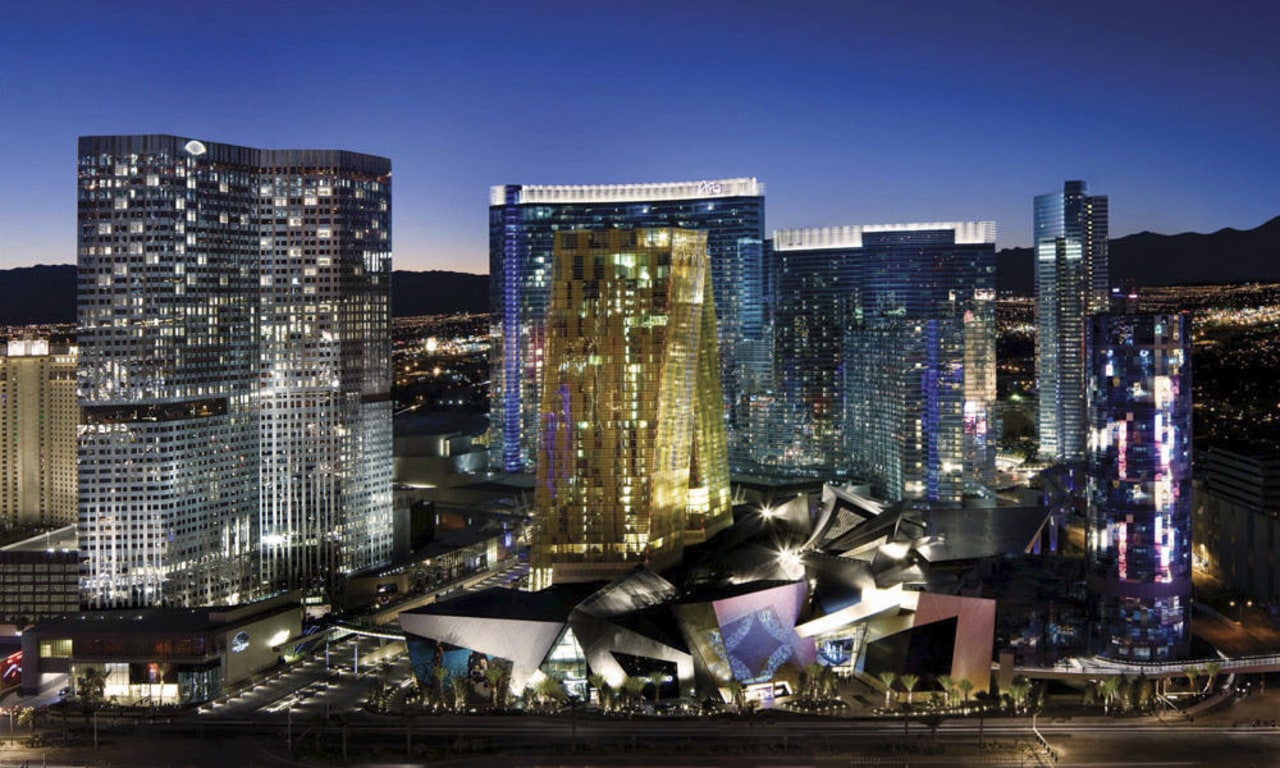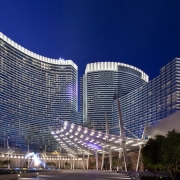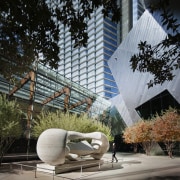Game on
Long known as Sin City, Las Vegas is coming of age with a $US8.5b development that proves there's more to this city than gambling
Many of us have heard the saying, what happens in Vegas, stays in Vegas some may even have said so themselves. The phrase is just one more indication of the city's status as one of the top tourist locations in the world.
From humble beginnings in the '30s and '40s, through the golden age of the Rat Pack and beyond, Las Vegas has been built on a mission of hands-on entertainment and excitement.
While that will always be its core business, the city, and more specifically, the area known as The Strip, is entering a new phase, says Bobby Baldwin, president and CEO of CityCenter.
"A burgeoning full-time population has seen Las Vegas become the 28th most populous city in the United States. No longer is the city purely an adjunct to the hotels and casinos, but rather, it has become a desirable place to live. CityCenter is an extension of that concept, founded on a more urbane and sustainable sensibility, one that offers a real sense of community at the heart of The Strip."
Situated on a 27ha site between the Bellagio and Monte Carlo resorts, CityCenter is a joint venture between MGM Mirage and Dubai World and holds the record as the largest privately funded construction project in the history of the country.
"The master plan, as developed by Ehrenkrantz, Eckstut and Kuhn Architects, called for CityCenter to be constructed like a real city," says Baldwin, "with a mix of distinct yet complementary built environments."
"CityCenter breaks away from established norms for the area, siting buildings so that they directly address and engage The Strip, as well as making physical connections to adjacent buildings," says Baldwin.
As with any city, CityCenter has been designed by a range of architects, to create the sense that it has evolved over time. The only difference is that CityCenter's design phase was a matter of months rather than years.
"Starting in 2004, executives from MGM Mirage began meeting with architects with the view to selecting a team that would be responsible for taking CityCenter through to completion," says Baldwin.
"Eventually, eight of the world's most renowned architects and firms were brought together to realise the six buildings that make up CityCenter."
Central to the development is Aria, a 4000-plus room hotel and casino, designed by Pelli Clarke Pelli Architects, the firm behind some of the world's largest private developments, including New York's World Financial Center and Canary Wharf in London.
"Aria is a breathtaking addition to the Las Vegas skyline, providing a rich variety of experiences right from street level. From its two curvilinear steel and glass towers to its soaring open spaces, Aria is clearly different to any building that has preceded it."
"Aria is currently the largest hotel in the world with LEED Gold status, helping demonstrate CityCenter's commitment to sustainability," says Baldwin.
Reflecting MGM Mirage's vision to bring mixed-use functionality to The Strip, the Mandarin Oriental, Las Vegas was conceived as a non-gaming, non-smoking hotel and condominium address.
"Recognised for its innovative buildings, Kohn Pedersen Fox Associates was chosen to design the Mandarin Oriental, Las Vegas," says Baldwin. "As the gateway to CityCenter it had to act as a beacon to all, while simultaneously conveying a sense of intimacy and seclusion for guests and residents."
The facade is an interlocking latticework of glass and metal elements inspired by traditional Chinese motifs creating a transparency that draws natural light inside. Like Aria, the Mandarin Oriental, Las Vegas has received LEED Gold certification from the Green Building Council.
Rising to 57 stories, the second-highest building in CityCenter, the Vdara Hotel and Spa is a non-gaming establishment. However, it is connected to the Bellagio casino via a covered walkway.
"Rafael Vie±oly has designed Vdara as a resort destination, with access to all the entertainment one can find on The Strip, but at a remove from it as well," says Baldwin.
The hotel's crescent shape, coupled with its glass facade, provides a constantly changing lightscape that imparts a sense of vitality and movement.
Rounding out the hotel accommodations at CityCenter will be the 400-room boutique Harmon Hotel and Spa. Designed by Lord Norman Foster, the Harmon too is a non-gaming hotel. Once complete, the Harmon will boast a rooftop swimming pool situated 30m above The Strip, offering guests some of the best views of the surrounding skyline.
Perhaps the most dramatic construction within CityCenter belongs to the development's one-of-a-kind Veer Towers.
"Veer Towers is unlike any other building on The Strip, not just in terms of its ingenious architecture, but because it offers 100% residential condominiums. But it's the off-kilter architecture that has people talking Helmut Jahn was the only choice to create the design," says Baldwin. "Inclined at opposing five-degree angles, the towers seem to be dancing with one another, a sense highlighted by the faceted facade, itself a masterful translation of energy and excitement into a physical form.
"CityCenter bridges the vitality of Las Vegas with the experiences travellers seek when they visit the great cities of the world," says Baldwin. "With spectacular architecture, significant works of art, great public spaces, cosmopolitan hotels, singular restaurants and incredible amenities, it is a dazzling urban destination."
Story by: Trendsideas
Home kitchen bathroom commercial design
Connected to the ocean
Masculine meets mixed use
Contrast and connection
















